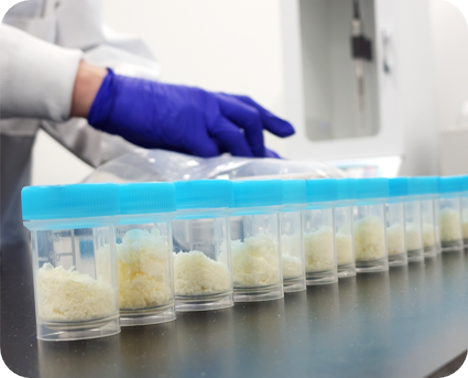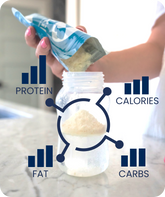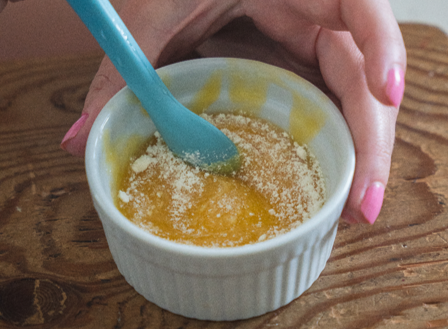
Does Freeze-Drying Preserve the Nutrients in Breast Milk?
At Milkify, we believe in evidence-based research.
Researchers around the world have been researching this topic for decades and they agree that freeze-drying is a safe and effective way to preserve the nutritional, immunological, and probiotic properties of breast milk that make it the gold standard of nutrition.
Below is a summary of some of the research highlights regarding how freeze-drying affects the important components of breast milk, and you see can the more at the link below!
A Summary of the Research on Freeze-Drying Breast Milk
Freeze-Drying is a Safe and Effective Way to Preserve the Nutrients in Breast Milk
Nutrients
Human milk is the ideal food to nourish infants. It contains vital macronutrients (proteins, carbohydrates, & fats) that are needed for healthy growth and development during the critical first few months of life.
The overall caloric density of breast milk is not altered by freeze-drying. Research shows that proteins, fats, and carbohydrates (including human milk oligosaccharides) are protected by freeze-drying.
Read more:
Antioxidants & Vitamins
Antioxidants in breast milk help prevent damage to important cellular components caused by reactive oxygen species (ROS). Vitamins and minerals are important for development and functioning of various organ systems.
Freeze-drying has no significant effect on the ability of antioxidants in breast milk to function properly, and retains the vital micronutrients/vitamins in breast milk.
Read more:
Immune Factors
Breast milk contains a complex mix of immune factors that help protect your baby from infections. Antibodies, cytokines, growth factors, and other bioactive factors in breast milk are important forms of protection while your baby's own immune system is maturing.
Freeze-drying resulted in retention of 75% of IgA antibodies, and 80% of IgG and IgM antibodies
Read more:
HMOs / Prebiotics
Human breast milk is a living food! Probiotic bacteria in your breast milk are important for establishing your baby's initial gut microbiota. A healthy gut microbiome is an important aspect of your baby's overall health.
Human milk oligosaccharides (HMOs) are important prebiotics, providing the food that probiotic bacteria need to grow. HMOs in breast milk are not affected by freeze-drying.
Read more:
Industry-Leading Nutritional Testing
Milkify Uses Hospital-Grade Nutritional Analysis Equipment
The Milkify QC lab also houses the Miris HMA™ - an FDA-approved human milk analyzer. The Miris HMA™ measures the amount of macronutrients (calories, fats, carbs, and proteins) in breast milk.
NICUs around the world use the Miris HMA to adjust breast milk fortification recipes for preemies and other medically-complex babies.
Milkify is the first and only freeze-drying service in the world using this state-of-the-art tool to offer breast milk nutritional testing directly to consumers. Macronutrient analysis is performed in-house by our Miris-certified technicians; we do not outsource testing to third-parties.
Breast milk macronutrient analysis is an add-on service. You can request your nutritional analysis at the time you place your order, or after the order is placed by contacting our support team.

The Milkify QC lab also houses the Miris HMA™ - an FDA-approved human milk analyzer. The Miris HMA™ measures the amount of macronutrients (calories, fats, carbs, and proteins) in breast milk.
NICUs around the world use the Miris HMA to adjust breast milk fortification recipes for preemies and other medically-complex babies.
Milkify is the first and only freeze-drying service in the world using this state-of-the-art tool to offer breast milk nutritional testing directly to consumers. Macronutrient analysis is performed in-house by our Miris-certified technicians; we do not outsource testing to third-parties.
Breast milk macronutrient analysis is an add-on service. You can request your nutritional analysis at the time you place your order, or after the order is placed by contacting our support team.

A Nutritional Boost, Anytime
Freeze-dried breast milk powder can be added to solid foods for a nutritional boost, so your child can continue to receive the benefits of breast milk even as they grow older.
It can also be added to freshly expressed breast milk for fortification to a specific caloric density (under doctor supervision).
Milkify can even provide nutritional testing for your breast milk powder or baseline frozen milk. Contact us for more info.
Not convinced?
Freeze-dried breast milk has been used by human milk donor banks since the 1950s. Milkify's research and process has been reviewed by experts (including medical professionals), and breast milk powder provided by Milkify has been used to fortify breast milk for infants experiencing a variety of medical conditions (always under doctor supervision).



